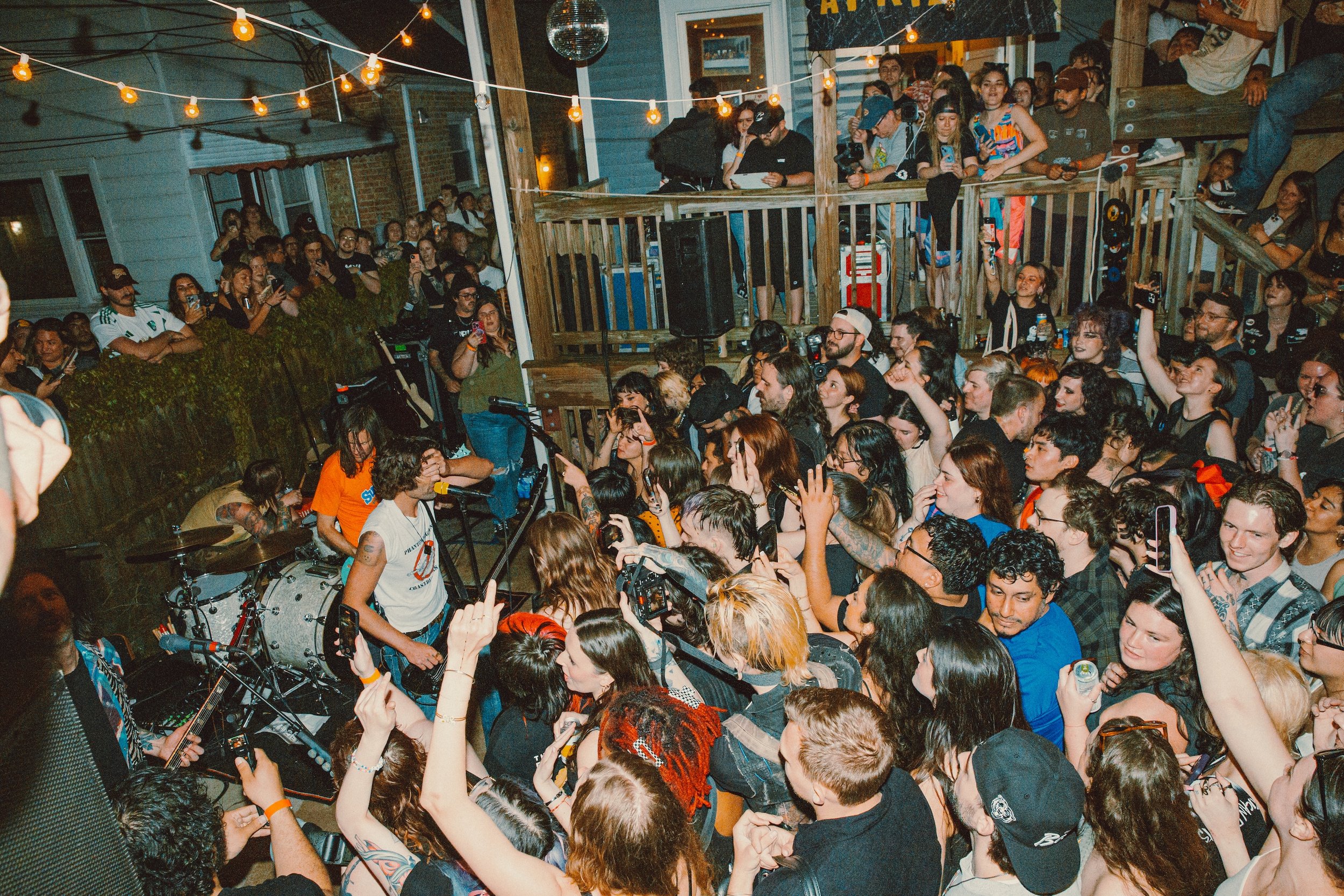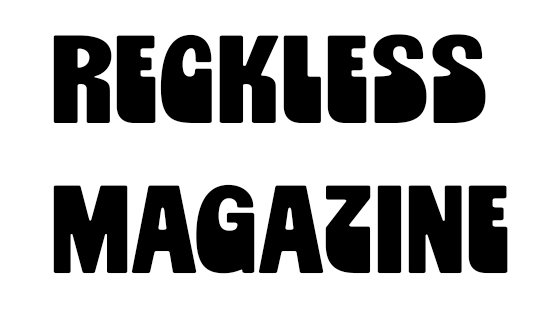Beautiful and Chaotic

Packed Pits, Dark Rooms, and Adaptability
Photography By Zeltzin Vazquez
Music photographer Zeltzin Vazquez talks about the music scene in Chicago, being able to adapt to different shooting environments, and overcoming burnout.
Chicago, USA
How did you begin your journey as a photographer?
My earliest memory of holding a camera was when my parents got me a Little Mermaid themed Disney camera as a kid. I remember taking tons of photos of my dog at the time. In my preteen years, I started taking photos of my best friend on my flip phone when we were in middle school. We were super into MySpace, and all the “scene queens” doing creative photoshoots inspired me. But it wasn’t until high school, when I got a slr camera for my birthday, that’s when things really started clicking. My friends at the time were in a band once they started playing diy shows I brought it around and thats when I started my music photography journey.
What have you learned along the way?
So much! One of the biggest things I’ve learned is the importance of being adaptable. You never know what kind of lighting, crowd, or environment you’ll be walking into. Being prepared helps a lot—carry a flash, bring extra batteries, backup memory cards. Being ready for anything is key.
What makes your photography style unique and different?
Having a consistent color palette has really helped make my photos feel recognizable. Lately, I’ve been experimenting with starburst filters too, and they’ve started to become a signature element in my work. I love adding these small touches that make people instantly know a photo was taken by me.
You mainly photograph bands and live music. What do you love most about being a music photographer? Why does it inspire you?
I love being able to share how beautiful and chaotic live music can be. Not everyone gets to go to shows, and when they see a photo of a packed pit or a musician mid-jump, it makes them want to be there and experience it themselves. It’s also the best feeling when someone in the scene asks if I caught a shot of them crowd surfing or stage diving. It means a lot when people are hyped about the photos I drop after a show.
What are some difficulties you’ve come across while on your photography journey?
Burnout, for sure. I used to feel like I had to shoot every single show or I was missing out. But now I’ve learned to be more intentional. I pick and choose which shows I want to shoot, and which ones I just want to enjoy as a fan. That mindset helped me avoid overshooting and made me more thoughtful with the moments I do capture.
Many of your photographs are from a mix of large venues and smaller shows. Do you have a preference? What are the pros and cons of each?
There’s something special about both. Smaller DIY spaces usually let you use flash, which helps capture the raw, chaotic energy in those darker rooms. Larger venues and festivals, on the other hand, have amazing lighting setups—you can get such high-quality, dynamic shots just from their stage lights. Both have their own magic, honestly.
Tell the story behind one of your photographs.
This shot was taken in 2017 at the Aragon Ballroom in Chicago while photographing Coheed and Cambria. The venue has a V-shaped photo pit with a center aisle runway used by security, and on this night, it also became my accidental front-row seat to one of the wildest moments I’ve ever had in the pit.
It was almost the end of the third song of the set, which meant my last chance to get photos before we had to leave the pit. I had this shot in mind: a wide angle of the fans in the aisle with their hands up, the band behind them, and all the energy in the frame.
I went to the far back of the pit aisle, dropped to one knee to swap my 50mm lens for a wide one. My head was down for maybe three seconds, and when I looked up, I headbutted Claudio Sanchez’s leg.
He had suddenly jumped up on the riser attached to the barricade right in front of me, and not just during any song, but “Welcome Home.” I froze. I couldn’t move or crawl out without distracting him, or the crowd, and it was dark, so I wasn't even sure he could see me. I just crouched there, leaning as far back away from him to give him space, hoping he wouldn’t trip over me or fall.
I was panicking, but just as he was about to dive into the insane solo, he lifted his guitar with one hand, spotted me on the floor, we locked eyes, he smiled wide, pointed at me with his free hand, then pointed back at his guitar and just shredded.
It was this quick, amazing moment, just me and Claudio, mid-solo, locked in for a second. I just watched him close out the song with his solo, snapped a few quick frames, including this one, and slipped out of the pit once he safely cleared the runway.
When I tell the story to this day, I still joke that he dedicated the solo to me haha. Jokes aside, though whether or not he consciously "dedicated" that solo to me, it was like he was totally in the moment and he recognized my presence in a positive way. It was that little acknowledgment, the eye contact, and the gesture. It felt like his way of saying, “I see you, and this is for you.”
You’re based in Chicago, Illinois. How does the city inspire you as an artist?
So many people think you have to be in LA or New York to make things happen, but the Midwest is so underrated and Chicago is the underdog city I love. The community here is amazing. People really show up for each other for shows, art events, pop-ups, and galleries. It’s a collaborative and uplifting scene, and I’m proud to be part of it.
What is the music scene in Chicago like? What do you love about it and what do you think needs to change?
The scene has already changed a lot for the better. Back in 2016, many of the DIY scenes felt super segmented. Bands only played with their circle. Promoters would book the same bill. But over the years, I’ve seen more mixed bills and genre crossovers. Lately, I’ve even seen drag performers doing sets between hardcore and punk bands. It’s super diverse and exciting, and honestly, I haven’t seen that kind of blend happening in other cities.
What are some of your favorite local bands and venues we should check out?
Subterranean is one of my favorite spots for DIY shows—when it’s packed, it’s the best vibe because there’s no space for awkward crowd gaps. Metro is another favorite, especially for slightly bigger acts. I’ve seen legendary sets there like Blink-182, Deftones, Limp Bizkit. It’s such an iconic venue.
If you could photograph any music scene in the world, where would you go and why?
I’d love to shoot in the United Kingdom Their local shows and festivals always look wild just from videos, their energy is insane. I’d love to capture that raw intensity and photograph both the crowds and the bands doing their thing.
What’s next for you?
I’m hoping to continue working closely with the Chicago artists I’ve been photographing and, ideally, book a tour sometime this year. That’s the next big goal.
To See More of Zeltzin’s Work, Follow @zeltzin.vazquez
BIB crowd
All-American Rejects House Show
Drag Artist Demme Onyx
Scarlett Demore
Drag artist Papa Squat
Demo Division
Bloc Party
Ablaze
Provoker
Subterranean Crowd
We Weren’t Invited
Soul Blind
Chappell Roan at Lolapalooza
Grow Blind






